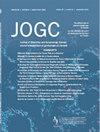临床共识第 455 号:胎儿性别鉴定与披露。
IF 2.2
Q2 OBSTETRICS & GYNECOLOGY
引用次数: 0
摘要
目标: 为胎儿会阴超声检查以及胎儿性别鉴定和披露提供指导:为胎儿会阴部超声波检查以及胎儿性别鉴定和披露提供指导:目标人群:所有正在妊娠的个体:备选方案:在常规第二产程产科超声检查中,将胎儿会阴部检查和胎儿性别鉴定作为解剖学检查的一部分,并遵从患者关于披露胎儿性别的意愿:结果:产前诊断胎儿生殖器和性别异常或变异、父母和孕期护理人员对胎儿性别的了解、父母对胎儿性别了解意愿的遵从:益处包括通过诊断胎儿生殖器畸形改善围产期预后的可能性,以及尊重妇女对个人健康信息的自主权。潜在的危害或成本包括:胎儿性别鉴定可能出现错误、患者和医疗服务提供者在安排和进行造影检查时需要花费更多时间,以及如果胎儿性别不符合预期,患者选择流产的风险极小:证据:通过对国际指南、加拿大法律裁决的审查,以及对 PubMed 和 Cochrane 数据库的文献检索,以本声明上一版本的文献为基础。2003年1月1日至2023年12月31日期间的英语研究文章、综述文章和系统综述均被纳入其中。检索词包括胎儿超声造影、性别鉴定和生殖器。对相关文章的参考文献进行了评估,并纳入了适用的文章:社交媒体摘要:孕期应检查胎儿生殖器,并在患者需要时向其安全披露性别信息。本文章由计算机程序翻译,如有差异,请以英文原文为准。
Clinical Consensus No. 455: Fetal Sex Determination and Disclosure
Objective
To provide guidance on ultrasound review of the fetal perineum as well as fetal sex determination and disclosure.
Target Population
All individuals with ongoing pregnancies.
Options
To include a review of the fetal perineum and determination of fetal sex as a component of the anatomic review during the routine second-trimester obstetric ultrasound and adhere to patient wishes regarding the disclosure of fetal sex.
Outcomes
Prenatal diagnosis of fetal genital and sex anomalies or variants, parental and pregnancy caregiver knowledge of fetal sex, and adherence to parental wishes regarding knowledge of fetal sex.
Benefits, Harms, and Costs
Benefits include the potential to improve perinatal outcomes through the diagnosis of fetal genital anomalies and respect for women’s rightful autonomy over personal health information. Potential harms or costs include a possible error in fetal sex determination, increased time for patients and health care providers in scheduling and performing the imaging, and the minimal risk of patients choosing to abort a pregnancy if the fetus is not the desired sex.
Evidence
Evidence built on the literature from the prior version of this statement through a review of international guidelines, Canadian legal rulings, and a literature search of PubMed and the Cochrane Database. English language research articles, review articles, and systematic reviews between January 1, 2003, and December 31, 2023, were included. Search terms included fetal ultrasonography, sex determination, and genitalia. The references of relevant articles were assessed, and applicable articles were included as well.
Intended Audience
All care providers for pregnant individuals in Canada.
Social Media Abstract
Fetal genitalia should be examined in pregnancy and the sex safely disclosed to the patient if they want this information.
CONSENSUS-BASED GOOD PRACTICE STATEMENTS
- 1.Diagnostic imaging providers and other health care providers should respect parental wishes regarding the disclosure of fetal sex.
- 2.Diagnostic imaging providers should make every effort to determine fetal sex during an obstetric ultrasound examination from the second trimester onwards and should include this information in the ultrasound report.
- 3.If fetal sex cannot be determined, re-examination or appropriate referral is recommended.
- 4.The obstetric ultrasound examination reports should contain a visible alert at the beginning of the report regarding the presence of information on fetal sex, thus giving parents the option of not reading any further.
求助全文
通过发布文献求助,成功后即可免费获取论文全文。
去求助
来源期刊

Journal of obstetrics and gynaecology Canada
OBSTETRICS & GYNECOLOGY-
CiteScore
3.30
自引率
5.60%
发文量
302
审稿时长
32 days
期刊介绍:
Journal of Obstetrics and Gynaecology Canada (JOGC) is Canada"s peer-reviewed journal of obstetrics, gynaecology, and women"s health. Each monthly issue contains original research articles, reviews, case reports, commentaries, and editorials on all aspects of reproductive health. JOGC is the original publication source of evidence-based clinical guidelines, committee opinions, and policy statements that derive from standing or ad hoc committees of the Society of Obstetricians and Gynaecologists of Canada. JOGC is included in the National Library of Medicine"s MEDLINE database, and abstracts from JOGC are accessible on PubMed.
 求助内容:
求助内容: 应助结果提醒方式:
应助结果提醒方式:


